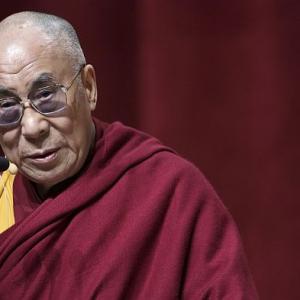There were two incidents of attempted self-immolation by young Tibetan monks in their early 20s in Lhasa in the so-called Tibet Autonomous Region on May 27, 2012. One of the incidents was fatal, while in the other the police managed to put out the fire. The protester suffered burns, but survived.
The dead man was identified as Tobgye Tseten, from the Tibetan-populated Gansu province which was separated from Tibet by the Chinese authorities after occupying Tibet. The injured, Dargye, is from the Kirti monastery area of the Sichuan province where the wave of self-immolations in protest against the continued Chinese occupation of Tibet started last year.
Since the protests through self-immolation started in the Kirti monastery area of Sichuan in the beginning of last year, there have been 37 attempted self-immolations -- 34 of them outside the TAR and three in the TAR. The majority of the self-immolation attempts have been reported from the Sichuan Province.
From the TAR, only one incident was reported last year as against 34 from the Tibetan areas outside the TAR (Sichuan, Gansu and Qinghai). No satisfactory explanation has been forthcoming as to why the TAR, which saw widespread Tibetan protests against the Han occupation before the Beijing Olympics in 2008, has remained the least affected.
Even in the two incidents of May 27, which took place outside the sacred Jokhang temple, the protesters had come from outside the TAR and were not local residents. This would indicate that while the Tibetans outside the TAR continue to defy the Chinese authorities, Tibetans of the TAR, who were subjected to brutal suppression after the violent incidents of 2008, have continued to remain subdued. There have been no copy-cat self-immolations in the TAR by local Tibetan residents.
Chinese authorities seem more confident of their ability to keep the TAR under control than the Tibetan areas of the other three provinces. The Tibetans of TAR maintain regular interactions with Tibetan refugees in Nepal, India and the West and the radical Tibetan Youth Congress, with its leadership based in the United States, was in the forefront of the revolt of 2008 in the TAR.
One would have expected that the Tibetans of TAR would have been in the forefront of the current wave of protests and non-violent satyagraha, but this has not been so. What one has been seeing since the beginning of last year has been a spontaneous movement with no central organisation behind it. It is the anger of the young monks in Sichuan, Gansu and Qinghai, outraged over the virtual Chinese occupation of the Kirti monastery of Sichuan last year and the arrest and forcible detention of many of the monks in a PLA detention centre, that has kept the protest movement sustained. The effect of this anger and outrage is still to be felt in the TAR.
The writer is additional secretary (retired), Cabinet Secretariat, Government of India, New Delhi, and, presently, Director, Institute For Topical Studies, Chennai, and Associate of the Chennai Centre For China Studies






